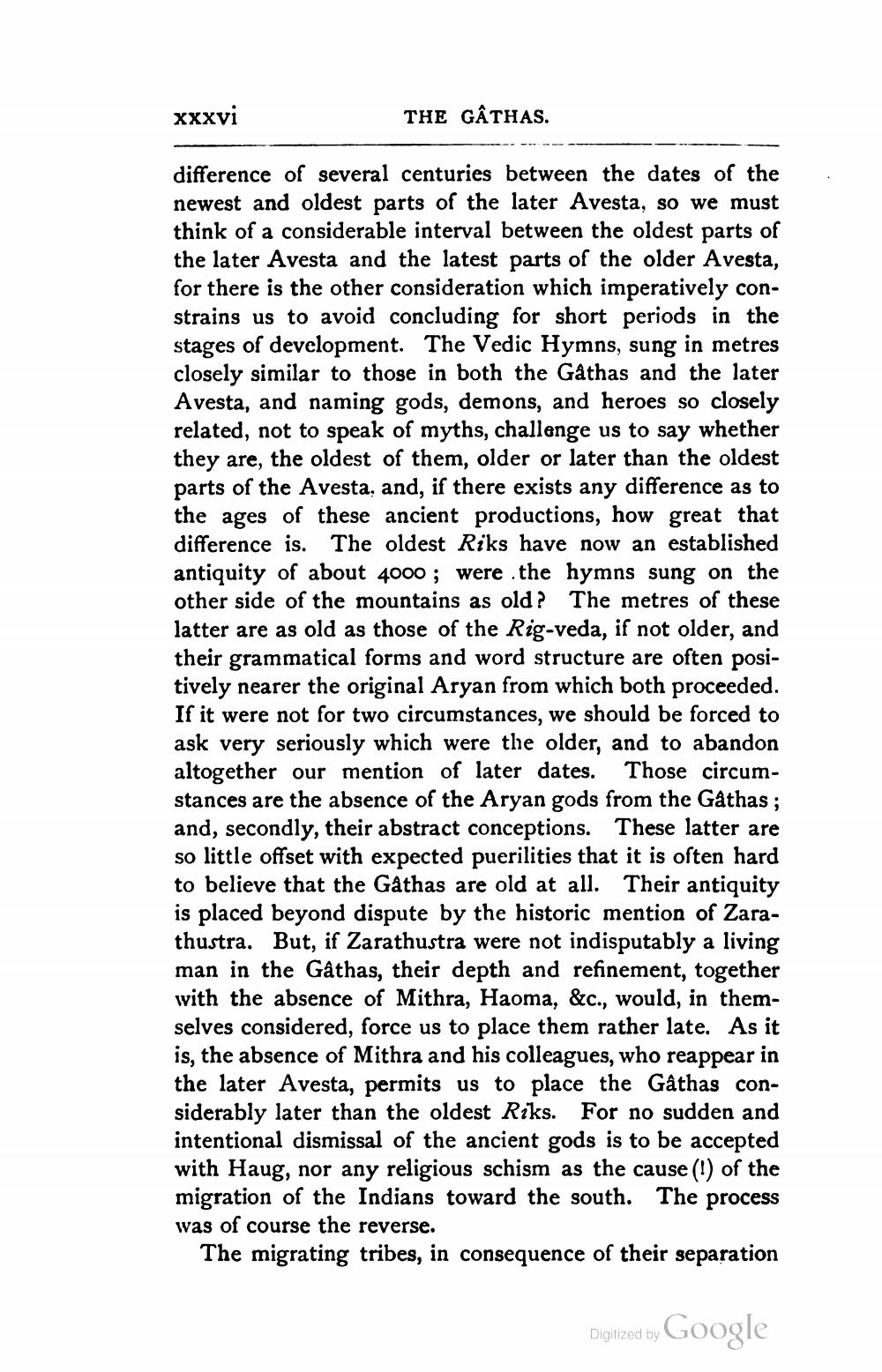________________
xxxvi
THE GÂTHAS.
--
-
-
-
-
-
difference of several centuries between the dates of the newest and oldest parts of the later Avesta, so we must think of a considerable interval between the oldest parts of the later Avesta and the latest parts of the older Avesta, for there is the other consideration which imperatively constrains us to avoid concluding for short periods in the stages of development. The Vedic Hymns, sung in metres closely similar to those in both the Gathas and the later Avesta, and naming gods, demons, and heroes so closely related, not to speak of myths, challenge us to say whether they are, the oldest of them, older or later than the oldest parts of the Avesta, and, if there exists any difference as to the ages of these ancient productions, how great that difference is. The oldest Riks have now an established antiquity of about 4000 ; were the hymns sung on the other side of the mountains as old? The metres of these latter are as old as those of the Rig-veda, if not older, and their grammatical forms and word structure are often positively nearer the original Aryan from which both proceeded. If it were not for two circumstances, we should be forced to ask very seriously which were the older, and to abandon altogether our mention of later dates. Those circumstances are the absence of the Aryan gods from the Gathas; and, secondly, their abstract conceptions. These latter are so little offset with expected puerilities that it is often hard to believe that the Gathas are old at all. Their antiquity is placed beyond dispute by the historic mention of Zarathustra. But, if Zarathustra were not indisputably a living man in the Gathas, their depth and refinement, together with the absence of Mithra, Haoma, &c., would, in themselves considered, force us to place them rather late. As it is, the absence of Mithra and his colleagues, who reappear in the later Avesta, permits us to place the Gâthas considerably later than the oldest Riks. For no sudden and intentional dismissal of the ancient gods is to be accepted with Haug, nor any religious schism as the cause (!) of the migration of the Indians toward the south. The process was of course the reverse.
The migrating tribes, in consequence of their separation
Digitized by Google




